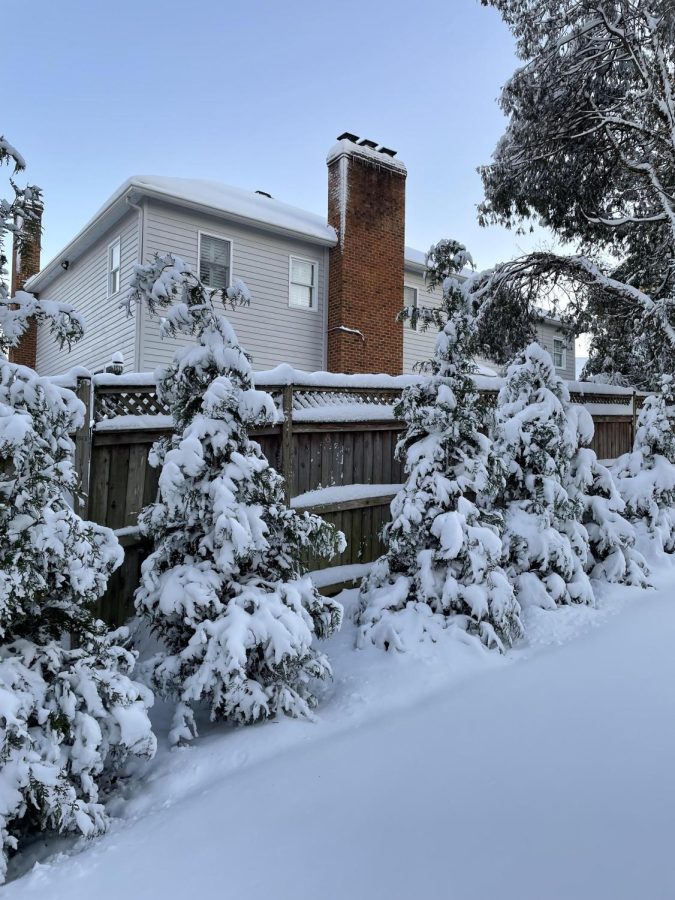This article was written prior to the announcement of cancellation on Friday
Snow storms across the Washington region that have resulted in unfavorable weather conditions led to official school closures on Monday, Tuesday and Wednesday. Initially, these decisions were reasonable, but the closure today, Jan. 6, was insensible.
Closures earlier in the week were made based on factors seen during snow storms every year: roads were icy, and conditions were unsafe for student bodies who rely on different modes of transportation. Fairfax County spans 406 miles and different parts of its school district experienced different weather conditions, justifying the need for closures.
“The main concern is students who have to walk to school or ride the bus,” said Ryan McElveen, former Fairfax County Public Schools (FCPS) Board Member. “There are still places in the southeastern part of the county where there are road and sidewalk issues.”
But warmer temperatures on Wednesday afternoon melted large swaths of ice and snow on roads and sidewalks. Public roads and many commercial centers have already shoveled snow from the pavement and adequately salted them, making travel by car and foot reasonably safe.
Missing school today will have unavoidable repercussions for students as the end of the academic quarter on Jan. 20 nears and due dates do not get pushed back. Some students must also take exams that cannot be delayed any further, like those enrolled in the semester-long Multivariable Calculus course. It is unfair for students to receive no in-person or virtual instruction, and still be expected to prepare for assessments and the end of the quarter within the next two weeks. Some students even fear long-term repercussions in school.
“These snow days make me worry that my teachers are going to treat this as if it was somehow the students’ fault,” junior Everly Johnston said. “It feels like they are going to use this against us for the rest of the school year as we fall behind on work.”
However, FCPS has maintained that conditions in parts of the county were still unfavorable for students, particularly in the south.
“The hardest hit area was the Southern part of the county (Hayfield, Mount Vernon and Annandale),” Jeff Platenberg, Assistant Superintendent of Facilities and Transportation, told McLean Principal Ellen Reilly. “There are back roads that have not been cleared nor are sidewalks cleared for students to walk to school – there are about 20,000.”
If the school district has reason to close schools for so many days, it should be supporting students and delivering official guidance on delaying due dates. High school students should not be forced to complete work and study without proper instruction on days where schools are completely closed, both online and in-person. The district should at minimum prohibit teachers from assigning new work and delay due dates to account for missed instructional hours.
The current educational state for students is complicated and contradictory; if teachers are allowed to assign work and announce unreasonable due dates through Schoology, the district’s online learning platform, why are students not in-school or on Zoom to actually learn the material?
Some students and staff even speculate that the closures after winter break serve as a buffer for surging COVID-19 cases across the county. The Northern Virginia Community College (NOVA) is offering virtual services to students until Jan. 11 due to the spread of COVID-19, and George Mason University mandated the booster shot for all students and staff on Dec. 31.
If school were to be in-person this week, FCPS employees and students would be returning from travel and vacations, possibly bringing the more contagious Omicron variant with them. Pressure from many conservative parent-led organizations like Do Better FCPS would challenge a move to virtual learning or full vaccine mandates, so some believe snow days were a simpler way for FCPS to achieve the same COVID-19 mitigation strategy.
“Students clearly see through the school board’s attempt to mask their decisions around the snow days being related to COVID,” junior Elizabeth Nourse said. “These unnecessary days without instruction seem to act as a quarantine for students returning from winter break.”
Regardless of motive, so many school closures announced hours in advance should be accompanied with official guidance on academics and delayed due dates. Until then, students will be forced to grapple with new assignments, assessments and a looming end of the quarter at home with no instruction.








